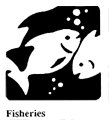 Issues Issues
Summary of Final Report Fisheries has unique features which make it significantly different from other sectors. First, notwithstanding the growth of aquaculture, it is primarily a 'hunting' occupation, finding and catching fish in the wild. Among other things, this raises the question of property rights. Second, there is a large and widely dispersed recreational group using the resource, something not found in any other natural resource sector supporting a large commercial industry. Third, because fish live in oceans and rivers they are difficult to observe; our knowledge of aquatic resources is poor compared with that of land-based resources. Fourth, the interconnectedness of aquatic systems can lead to unforeseen 'downstream' effects. Finally, there are natural variabilities in marine ecosystems which are very much greater than for land ecosystems. As we grapple with the management of Australia's fisheries resources within the principles of ecologically sustainable development, in particular the need to maintain ecological systems and biodiversity to provide for intergenerational equity, we must realise that the requirement is for ecosystem management, recognising that this will require better data and improved understanding, with fishing activity becoming a subset in overall management of the aquatic resource. Management has to establish operating frameworks which embrace both economic and environmental factors; which have the flexibility to respond to natural fluctuations and to the impacts brought on by human activity, including such matters as coastal development and urban, agricultural and industrial discharges as well as fishing itself; with the resilience to cope with the uncertainty of the knowledge base; and with the flexibility to adjust to new information and improved understanding. In all these considerations we need to remember and ensure the involvement of the community, as owners of the resource and fishers (commercial, recreational and indigenous) who are dependent on the resource and its wise management for their lifestyle and, in the case of commercial fishers in particular, their livelihood. Key recommendations:
Further recommendations in the Fisheries report cover protection and conservation of the global marine environment, tertiary education, aquaculture, value adding in commercial fishing, indigenous fishing, greenhouse gases and climate change. To assist in the implementation of their recommendations the Fisheries Working Group presents a table of suggested priorities, main agencies responsible for implementation, and costs.
|
||||